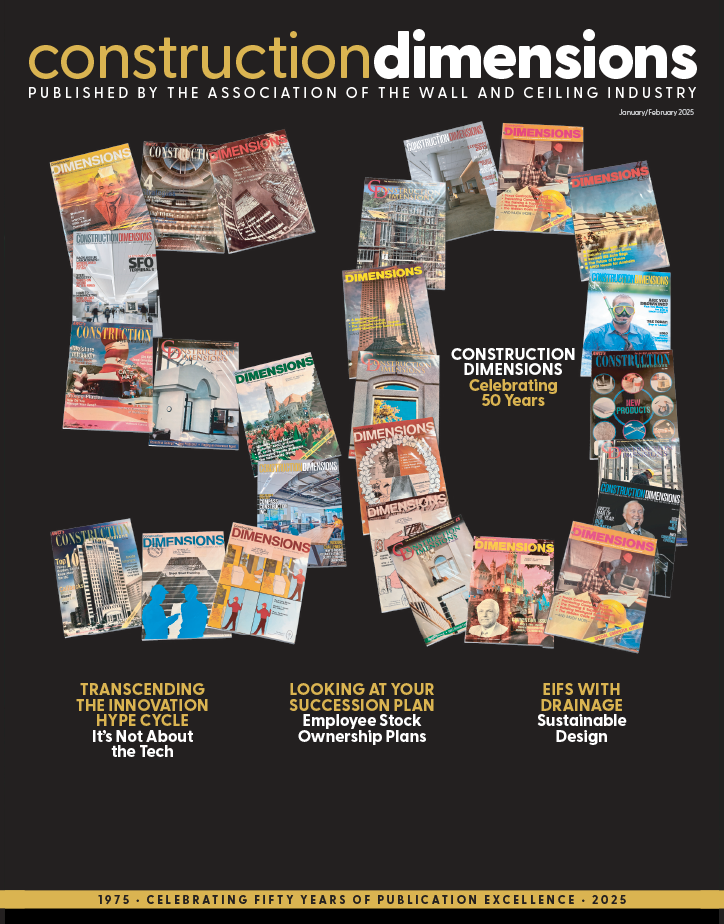Along with a welcome influx of neophyte “bidmeisters” gathering by my doorway as of late, I am greeted with a number of questions that could only be proposed by a such flock of interns and apprentices. One of the most amusing questions goes something like this: “What is the first thing an estimator does upon being awarded a new project?”
Ha! Now, aside from the obvious response involving a long-awaited happy hour hosted by the boss, my reply might surprise prospects and veteran “guesstimators” alike, as it refers to a task that might better be defined under project management, but more likely befalls the estimator due to immediacy. Of course, I’m alluding to that canny practice that old schoolers term “the first draw.”
I emphasize the element of immediacy because it is not infrequent for an award announcement and a demand for mobilization to occur almost simultaneously, owing to interim scheduling on the part of the general contractor. Be that as it may, it is often incumbent upon the estimator to rush to put together a schedule of values literally overnight, usually before a project manager (PM) is even assigned.
For my novice colleagues, a schedule of values (SOV) is merely a billing structure that reflects the scope and amount of an estimate, traditionally broken out by material and labor. During the ongoing course of a project, the PM typically submits a monthly bill based on a percentage of completion of the SOV. Pretty straightforward and typical, right? But it’s the initial authorship of the SOV, and particularly the first draw that presents some atypical obstacles for the estimator who presents them. Obstacles that can and will put an estimator into a wobble over the first draw are several, but four loom large. These critical items include mobilization, specialty fabrications, retainage, and general contractor review.
Mobilization is just what the term implies—i.e., whatever it takes to get a job started up. A commercial job of any size and substance would include a job trailer, phone and internet, copier/fax, and other office requirements in addition to such field facilities as small tools, safety equipment, water, ice, and parking permits. These are real costs, and an estimator who omits them does so at his peril.
Specialty fabrications consist of products which are pre-cut, pre-manufactured, or otherwise special ordered by a second-tier sub, and therefore must be prepaid up front (thus required as part of the first draw). Some examples of specialty items might include pre-cut wood ceilings or panelized products. Since specialty items are pre-purchased by the design team, they are often stored off-site in a controlled environment, to be implemented on an as-needed basis.
Retainage is a contentious line item that can cause an estimator a lot of grief as he attempts to put together a SOV. Retainage is the withholding of funds (usually ten percent) on each successive draw as a means of ensuring that the project will be completed when or before funds are exhausted. It’s easy to see how an estimator might resent (or resist) this practice, as it frustrates his ability to affix a fair profit margin to his SOV. Thankfully, many contracts allow the reduction of retainage by fifty percent, once half of the project is deemed complete by the design team. The pain of retainage can be offset somewhat by front-end loading (see below).
General contractor review is not a line item per se, but it can be a critical obstacle to a satisfactory SOV, and especially to a first draw. While the final arbiter for each monthly payment remains the design team’s representative (i.e., the owner), the GC typically authorizes a subcontractor’s charges in advance to guard against any possible overbilling that the design team might detect. This is where a sly estimator may elect to inflate his values, or front-end load, on the first draw to ensure a healthy billing in spite of retainage. Some subs have been known to inflate their first draw numbers excessively. I know a sub who named his rather luxurious houseboat, First Draw. But bidmeister beware! A blatant overbilling is sure to result in an unwanted haircut at a critical juncture.
Clearly, there are other values that might be included in a first draw (layout and premium time come to mind). But novice “exactimators” like my newfound friends would do well to simplify and stick with the famous four. Those who do so are the happiest lot.






